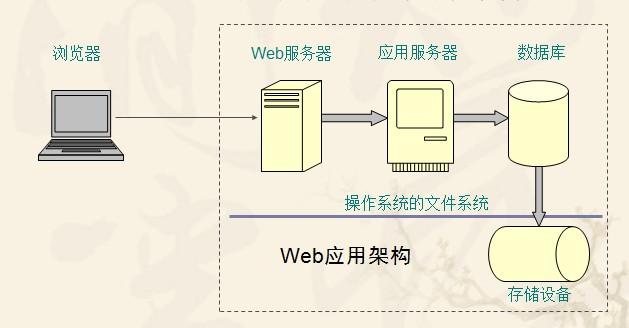Maison >Java >javaDidacticiel >Java中常用缓存Cache机制的实现
Java中常用缓存Cache机制的实现
- 伊谢尔伦original
- 2016-11-25 10:10:221333parcourir
所谓缓存,就是将程序或系统经常要调用的对象存在内存中,一遍其使用时可以快速调用,不必再去创建新的重复的实例。这样做可以减少系统开销,提高系统效率。

缓存主要可分为二大类:
一、通过文件缓存,顾名思义文件缓存是指把数据存储在磁盘上,不管你是以XML格式,序列化文件DAT格式还是其它文件格式;
二、内存缓存,也就是实现一个类中静态Map,对这个Map进行常规的增删查.
代码如下 :
package lhm.hcy.guge.frameset.cache;
import java.util.*;
//Description: 管理缓存
//可扩展的功能:当chche到内存溢出时必须清除掉最早期的一些缓存对象,这就要求对每个缓存对象保存创建时间
public class CacheManager {
private static HashMap cacheMap = new HashMap();
//单实例构造方法
private CacheManager() {
super();
}
//获取布尔值的缓存
public static boolean getSimpleFlag(String key){
try{
return (Boolean) cacheMap.get(key);
}catch(NullPointerException e){
return false;
}
}
public static long getServerStartdt(String key){
try {
return (Long)cacheMap.get(key);
} catch (Exception ex) {
return 0;
}
}
//设置布尔值的缓存
public synchronized static boolean setSimpleFlag(String key,boolean flag){
if (flag && getSimpleFlag(key)) {//假如为真不允许被覆盖
return false;
}else{
cacheMap.put(key, flag);
return true;
}
}
public synchronized static boolean setSimpleFlag(String key,long serverbegrundt){
if (cacheMap.get(key) == null) {
cacheMap.put(key,serverbegrundt);
return true;
}else{
return false;
}
}
//得到缓存。同步静态方法
private synchronized static Cache getCache(String key) {
return (Cache) cacheMap.get(key);
}
//判断是否存在一个缓存
private synchronized static boolean hasCache(String key) {
return cacheMap.containsKey(key);
}
//清除所有缓存
public synchronized static void clearAll() {
cacheMap.clear();
}
//清除某一类特定缓存,通过遍历HASHMAP下的所有对象,来判断它的KEY与传入的TYPE是否匹配
public synchronized static void clearAll(String type) {
Iterator i = cacheMap.entrySet().iterator();
String key;
ArrayList arr = new ArrayList();
try {
while (i.hasNext()) {
java.util.Map.Entry entry = (java.util.Map.Entry) i.next();
key = (String) entry.getKey();
if (key.startsWith(type)) { //如果匹配则删除掉
arr.add(key);
}
}
for (int k = 0; k < arr.size(); k++) {
clearOnly(arr.get(k));
}
} catch (Exception ex) {
ex.printStackTrace();
}
}
//清除指定的缓存
public synchronized static void clearOnly(String key) {
cacheMap.remove(key);
}
//载入缓存
public synchronized static void putCache(String key, Cache obj) {
cacheMap.put(key, obj);
}
//获取缓存信息
public static Cache getCacheInfo(String key) {
if (hasCache(key)) {
Cache cache = getCache(key);
if (cacheExpired(cache)) { //调用判断是否终止方法
cache.setExpired(true);
}
return cache;
}else
return null;
}
//载入缓存信息
public static void putCacheInfo(String key, Cache obj, long dt,boolean expired) {
Cache cache = new Cache();
cache.setKey(key);
cache.setTimeOut(dt + System.currentTimeMillis()); //设置多久后更新缓存
cache.setValue(obj);
cache.setExpired(expired); //缓存默认载入时,终止状态为FALSE
cacheMap.put(key, cache);
}
//重写载入缓存信息方法
public static void putCacheInfo(String key,Cache obj,long dt){
Cache cache = new Cache();
cache.setKey(key);
cache.setTimeOut(dt+System.currentTimeMillis());
cache.setValue(obj);
cache.setExpired(false);
cacheMap.put(key,cache);
}
//判断缓存是否终止
public static boolean cacheExpired(Cache cache) {
if (null == cache) { //传入的缓存不存在
return false;
}
long nowDt = System.currentTimeMillis(); //系统当前的毫秒数
long cacheDt = cache.getTimeOut(); //缓存内的过期毫秒数
if (cacheDt <= 0||cacheDt>nowDt) { //过期时间小于等于零时,或者过期时间大于当前时间时,则为FALSE
return false;
} else { //大于过期时间 即过期
return true;
}
}
//获取缓存中的大小
public static int getCacheSize() {
return cacheMap.size();
}
//获取指定的类型的大小
public static int getCacheSize(String type) {
int k = 0;
Iterator i = cacheMap.entrySet().iterator();
String key;
try {
while (i.hasNext()) {
java.util.Map.Entry entry = (java.util.Map.Entry) i.next();
key = (String) entry.getKey();
if (key.indexOf(type) != -1) { //如果匹配则删除掉
k++;
}
}
} catch (Exception ex) {
ex.printStackTrace();
}
return k;
}
//获取缓存对象中的所有键值名称
public static ArrayList getCacheAllkey() {
ArrayList a = new ArrayList();
try {
Iterator i = cacheMap.entrySet().iterator();
while (i.hasNext()) {
java.util.Map.Entry entry = (java.util.Map.Entry) i.next();
a.add((String) entry.getKey());
}
} catch (Exception ex) {} finally {
return a;
}
}
//获取缓存对象中指定类型 的键值名称
public static ArrayList getCacheListkey(String type) {
ArrayList a = new ArrayList();
String key;
try {
Iterator i = cacheMap.entrySet().iterator();
while (i.hasNext()) {
java.util.Map.Entry entry = (java.util.Map.Entry) i.next();
key = (String) entry.getKey();
if (key.indexOf(type) != -1) {
a.add(key);
}
}
} catch (Exception ex) {} finally {
return a;
}
}
}
package lhm.hcy.guge.frameset.cache;
public class Cache {
private String key;//缓存ID
private Object value;//缓存数据
private long timeOut;//更新时间
private boolean expired; //是否终止
public Cache() {
super();
}
public Cache(String key, Object value, long timeOut, boolean expired) {
this.key = key;
this.value = value;
this.timeOut = timeOut;
this.expired = expired;
}
public String getKey() {
return key;
}
public long getTimeOut() {
return timeOut;
}
public Object getValue() {
return value;
}
public void setKey(String string) {
key = string;
}
public void setTimeOut(long l) {
timeOut = l;
}
public void setValue(Object object) {
value = object;
}
public boolean isExpired() {
return expired;
}
public void setExpired(boolean b) {
expired = b;
}
}
//测试类,
class Test {
public static void main(String[] args) {
System.out.println(CacheManager.getSimpleFlag("alksd"));
// CacheManager.putCache("abc", new Cache());
// CacheManager.putCache("def", new Cache());
// CacheManager.putCache("ccc", new Cache());
// CacheManager.clearOnly("");
// Cache c = new Cache();
// for (int i = 0; i < 10; i++) {
// CacheManager.putCache("" + i, c);
// }
// CacheManager.putCache("aaaaaaaa", c);
// CacheManager.putCache("abchcy;alskd", c);
// CacheManager.putCache("cccccccc", c);
// CacheManager.putCache("abcoqiwhcy", c);
// System.out.println("删除前的大小:"+CacheManager.getCacheSize());
// CacheManager.getCacheAllkey();
// CacheManager.clearAll("aaaa");
// System.out.println("删除后的大小:"+CacheManager.getCacheSize());
// CacheManager.getCacheAllkey();
}
}Déclaration:
Le contenu de cet article est volontairement contribué par les internautes et les droits d'auteur appartiennent à l'auteur original. Ce site n'assume aucune responsabilité légale correspondante. Si vous trouvez un contenu suspecté de plagiat ou de contrefaçon, veuillez contacter admin@php.cn
Article précédent:9本Java程序员必读的书Article suivant:《Java程序员修炼之道》作者Ben Evans:保守的设计思想是Java的最大优势

